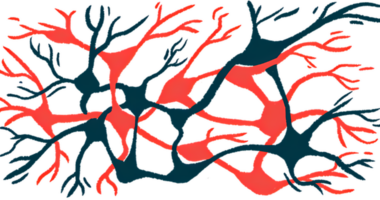Study challenges use of KTP as potential treatment for Parkinson’s
Scientists: Molecule thought to activate PINK1 protein 'just too big to work'

A new study by scientists in Australia may be set to overturn more than a decade of thinking that the use of the KTP molecule could work as a treatment for Parkinson’s disease.
Titled “Interaction of PINK1 with nucleotides and kinetin” and published in Scientific Advances, the study says KTP won’t be able to activate a protein called PINK1 — known to play key roles in maintaining the health of mitochondria, the so-called powerhouses of cells — because the molecule cannot physically bind to it.
Simply put, the study found that the “molecule thought to be a potential drug candidate for Parkinson’s disease is too big to work in the mode that was proposed,” according to a press release from the Parkinson’s Disease Research Centre at the Walter and Eliza Hall Institute of Medical Research (WEHI).
“The real key to all of these findings has been our ability to visualise PINK1 at an atomic level and observe the structural changes that happen when these molecules bind,” said Sylvie Callegari, PhD, a study co-author and a senior research officer at WEHI.
“This work highlights the importance of using the latest high-powered imaging to visualise in detail how therapeutic compounds work,” Callegari added.
KTP protein long thought to potentially work as treatment for Parkinson’s
Mutations that disrupt the activity of PINK1 are a well-established cause of familial Parkinson’s disease, and mitochondrial dysfunction also is thought to play a role in non-genetic forms of the disease.
Boosting the activity of the PINK1 protein is therefore seen as a viable strategy as a treatment for Parkinson’s.
PINK1 is able to bind to the so-called cellular energy currency, called adenosine triphosphate or ATP, which is how the protein gets energy to do its job. Previous studies had suggested that PINK1 also may be able to use the related molecule KTP — fully, kinetin triphosphate — for energy, which implied that KTP might be a useful therapeutic candidate for Parkinson’s.
This new research shows, however, that it’s not physically possible for PINK1 to get energy from KTP, effectively challenging that idea.
“We did not expect that result, but it’s clear from our visualisation that KTP is just too big to work,” Callegari said.
Callegari and WEHI colleagues used a technology called cryo-electron microscopy in their research to examine the molecular structure of PINK1 in greater detail than ever before.
Through these experiments, the researchers were able to create a detailed model for how PINK1 interacts with ATP. They showed that the ATP molecule fits snugly into a cleft or pocket of the PINK1 protein, allowing PINK1 to tightly bind ATP.
But when the researchers tried the same thing with KTP, they found that the molecule isn’t quite the right shape and size to fit into that ATP pocket.
In fact, KTP could not fit because a single amino acid, one of the building blocks of proteins like PINK1, was sticking out at an angle that bumped up against the molecule. That prevented it from sliding into the cleft. The researchers showed that PINK1 was able to use KTP only if this amino acid, which they dubbed a “gatekeeper,” was removed.
We did not expect [this] result, but it’s clear from our visualisation that KTP is just too big to work.
“With our detailed structural understanding of PINK1, we define exactly why KTP cannot interact with PINK1: The PINK1 gatekeeper residue prevents the enlarged nucleobase to bind in the ATP binding pocket,” the researchers concluded.
According to the release, these findings have “debunked over 10 years of research” into KTP.
Previous studies had indicated that a molecule called kinetin is able to activate PINK1. It’s been assumed that this is because kinetin is converted into KTP inside of cells, and PINK1 uses KTP for energy — but these findings suggest that kinetin must be activating PINK1 through some other mechanism that isn’t yet known.
“Our data now indicate that the underlying mechanism behind kinetin-induced PINK1 activation, which has been reproduced by others, is unlikely to occur via KTP conversion,” the scientists wrote, calling for further analysis to explore other possible mechanisms.
According to Callegari, the team will look for other potential compounds.
“The strategy will now be used to explore novel compounds than can activate or stabilise PINK1, hopefully leading to new treatments for Parkinson’s disease,” Callegari said.







